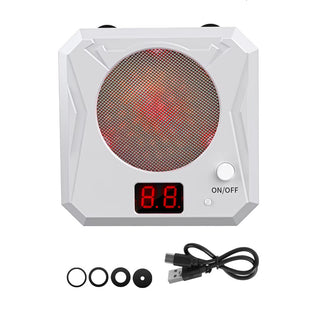Preliminary research data show that about a fifth of all Americans who bought guns last year were first-time gun owners. Sales usually spike around elections, but the sheer volume is notable.
In March last year, federal background checks, a rough proxy for purchases, topped one million in a week for the first time since the government began tracking them in 1998. And the buying continued, through the protests in the summer and the election in the fall, until a week this spring broke the record with 1.2 million background checks.
“There was a surge in purchasing unlike anything we’ve ever seen,” said Dr. Garen J. Wintemute, a gun researcher at the University of California, Davis. “Usually, it slows down. But this just kept going.”
Not only were people who already had guns buying more, but people who had never owned one were buying them too. New preliminary data from Northeastern University and the Harvard Injury Control Research Center show that about a fifth of all Americans who bought guns last year were first-time gun owners. And the data, which has not been previously released, showed that new owners were less likely than usual to be male and white. Half were women, a fifth were Black and a fifth were Hispanic.
In all, the data found that 39 percent of American households’ own guns. That is up from 32 percent in 2016, according to the General Social Survey, a public opinion poll conducted by a research center at the University of Chicago. Researchers said it was too early to tell whether the uptick represents a reversal from the past 20 years, in which ownership was basically flat.
“Americans are in an arms race with themselves,” said Marqueece Harris-Dawson, who represents South Los Angeles, where the surge in gun violence has been particularly sharp, on the City Council. “There was just as much a run on guns as on toilet paper in the beginning of the pandemic.”
Now the gun debate is, once again, taking center stage, this time at a moment of hardening political division and deepening distrust. Sales usually spike around elections, but the sheer volume this time is notable. It also gives a worrying glimpse into the way Americans view one another — as people they want to protect themselves from.
As the country’s major political parties move further apart, so does the legislation that flows from them — and like voting rights and abortion, guns are no exception. There is no single reason for the surge, but social scientists point to many potential drivers.
“There is a breakdown in trust and a breakdown in a shared, common reality,” said Lilliana Mason, a political scientist at the University of Maryland who writes about political violence. “There is also all this social change, and social change is scary.”
Many gun store workers reported that last year set records for sales and also that they noticed different types of buyers walking in the door. Thomas Harris, a former law enforcement officer who works at the gun counter at Sportsman’s Warehouse in Roanoke, Va., said that around March last year, the customers he would speak with began to include more white-collar workers, such as people from insurance firms and software companies. He said many of the buyers were not conservative and most had never handled a gun.
“Outside of seeing something on TV or in a movie, they knew nothing about them,” he said, adding that they did not know how to load a gun or what a caliber was. He said many of these apparent first-time buyers purchased more expensive guns, in the range of $400 or more. The purpose, he said, was not to carry the gun around in public, but to keep it at home. “They were saying: ‘We’re going to be locking down. We’re constrained to our homes. We want to keep safe.’”
The Northeastern and Harvard data come from a survey of 19,000 people conducted in April. Researchers found that about 6.5 percent of American adults bought guns in 2020, or about 17 million people. That was up from 5.3 percent in 2019, said Dr. Matthew Miller, a professor of epidemiology at Northeastern, who conducted the study with Deborah Azrael, a researcher at Harvard. While about a fifth of gun buyers last year were first-time buyers, the share was about the same in 2019, he said, suggesting that the trend did not start with the pandemic.
As for gun owners overall in 2021, he said, 63 percent were male, 73 percent were white, 10 percent were Black, and 12 percent were Hispanic.
The pandemic accelerated a trend of rising gun sales. According to The Trace, a news outlet that tracks gun sales, purchases have been rising steadily over the past decade, with a jump around the beginning of 2013, after the Sandy Hook shooting. Sales did not change much under former President Donald J. Trump, but they exploded in 2020, up by 64 percent from the previous year. The single highest month last year was in June, as protests swept across the country after the murder of George Floyd.
The pace has continued this year: Americans bought more than 2.3 million guns in January, the highest since last July, according to The Trace. And overall, in the first quarter, sales jumped 18 percent, compared to the first quarter of 2020, according to The Trace.
The government does not track the number of guns sold in the United States. Even the federal background check data do not give a complete picture, as many sales are private. Estimates of the total number of guns in circulation range as high as 400 million and it doesn’t show any signs of slowing.
ns of slowing.





